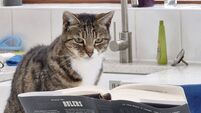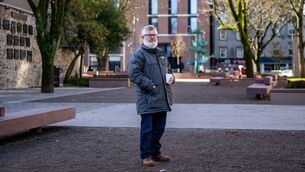Feathers fly amid faction fighting
THE Battle of Kinsale was not the only great confrontation to take place in Co Cork. Folk tradition has it that two armies of starlings once faced each other there. Starlings are well able to fight their corner and can see off bullies such as blackbirds, but faction fights really aren’t their thing. So did the legendary battle ever take place? Now a book has appeared that throws light on the subject: Glynn Anderson’s Birds of Ireland, facts, folklore and history.
The starling incident, it seems, has a considerable pedigree. Samuel Pepys, who lived through the London plague of 1665 and the great fire a year later, is remembered for his diary, but, among his collection of ballads, is one entitled The Battell of the Birds. This describes how two armies of starlings faced each other in the city of Cork. Hostilities ensued and huge numbers of birds were left dead on the streets.
But according to Glynn, there was a more recent avian conflict. The Holy Bough column in the Evening Echo of Christmas 2007 recalled a confrontation between starlings and rooks in Fermoy. At dusk on November 2, 1930, 10,000 starlings attacked a flock of rooks, attempting to dislodge them from their roost. The battle was renewed each evening, with the outnumbered rooks losing out. Then reinforcements arrived and, by November 11, the starlings had been defeated.
Glynn’s lavishly illustrated book outlines the beliefs and traditions associated with each species of bird. Like most sciences, ornithology began in superstition. In the writings of Gerald of Wales, for example, sense and nonsense are mixed. Gerald, a Norman cleric and the first person to chronicle Ireland’s wildlife, visited Cork and Waterford in 1183 and Dublin in 1185. Although prejudiced against the Irish, he was a keen observer. He noticed that the crows here are grey and that we had no magpies. But he also believed that a dead kingfisher, hung up by the bill, will grow a new set of feathers every year. The body won’t rot and gives off a pleasant odour. Ospreys, he believed, have talons on one foot and webs between the toes of the other.
Amid such rubbish some of his pronouncements have a weird plausibility. He tells us, for example, that herons stand on one foot with a stone held in the other so that, if the bird nods off, the stone will fall on its toes and wake it. Bizarre as it seems, the idea is more akin to a scientific hypothesis than a piseóg. When swallows disappeared each autumn, it was concluded that they spend the winter sleeping in mud at the bottoms of lakes. In the absence of the migratory explanation, the idea seemed plausible. Barnacle geese disappeared in the spring so where did they breed? Barnacles resembled geese in colour so did goslings hatch from them? The Church thought so; goose could be eaten on days of abstinence because it was considered to be fish.
That crows were birds of ill omen was not just superstition. Ravens and hooded crows, the Irish equivalents of vultures, visited the scaffold after executions and ate bodies on battlefields. The magpie, a member of the crow family, is tarred with the same brush but for more fanciful reasons. Unlike the other crows, it did not don a completely black outfit when attending a funeral. Being only half-dressed, it insulted the deceased.
But another magpie myth had an observational basis. The magpie tried tell the other birds how to make nests. Most of the birds left before the class had ended, thinking that they already knew how to do so. The wren, however, stayed to the end, which is why only magpies and wrens have roofs over their nests. Wrens occupy a special place in Irish folklore. According to Glynn, the druids regarded the bird as sacred and so the Church had a hostile attitude to it, hence its persecution on St Stephen’s Day.
Birds of Ireland, facts folklore and history, by Glynn Anderson, is published by The Collins Press. Glynn will talk about his book at the National Botanic Gardens, Dublin, at 3pm on November 16.














